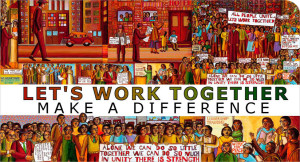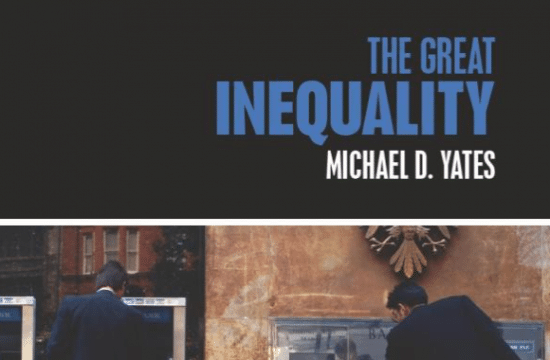 While unions are indispensable organizations of the working class, they are not likely to lead a radical social transformation. They face inherent constraints. First, unions may replicate already existing divisions within the working class. Many occupations are segregated by gender. Nearly all coal miners are men. A union of coal miners is unlikely, therefore, to attack gender discrimination. It is more likely that sexism will become deeply rooted in the union itself. The same can be said about racial divisions. Black and white workers may cooperate in a strike and may work side by side, but this does not mean that the union will actively confront the racism that is pervasive in the United States. Second, unions are defensive organizations. In their day-to-day operations, they will be inclined to accept capitalism as a fact of life and try to do the best for their members within its confines. A union may begin with a radical perspective, but over time it is likely to accommodate itself to capitalism and “pragmatically” maneuver within it. In fact, acceptance of capitalism may become the ideology of a labor movement, as is true for most unions in the United States. Not only do U.S. labor leaders accept the system, but they have collaborated with employers to undermine attempts by workers here and abroad to forge radical labor organizations.
While unions are indispensable organizations of the working class, they are not likely to lead a radical social transformation. They face inherent constraints. First, unions may replicate already existing divisions within the working class. Many occupations are segregated by gender. Nearly all coal miners are men. A union of coal miners is unlikely, therefore, to attack gender discrimination. It is more likely that sexism will become deeply rooted in the union itself. The same can be said about racial divisions. Black and white workers may cooperate in a strike and may work side by side, but this does not mean that the union will actively confront the racism that is pervasive in the United States. Second, unions are defensive organizations. In their day-to-day operations, they will be inclined to accept capitalism as a fact of life and try to do the best for their members within its confines. A union may begin with a radical perspective, but over time it is likely to accommodate itself to capitalism and “pragmatically” maneuver within it. In fact, acceptance of capitalism may become the ideology of a labor movement, as is true for most unions in the United States. Not only do U.S. labor leaders accept the system, but they have collaborated with employers to undermine attempts by workers here and abroad to forge radical labor organizations.
Despite their limitations, unions, as we have seen in Part I, teach workers many useful things simply because they are collective organizations. In addition, they have sought to actively educate their members through formal programs. These have taken several forms: teaching English to newly-arrived immigrants, training shop stewards, and establishing full-blown college programs and technical training institutes. Radicals have played important roles in union-based education programs, but it can be difficult for them to teach with an independent spirit. Union leaders are interested in practical education, with a focus upon training union officials to better perform their jobs as stewards, negotiators, and contract administrators, and they may not see the need for a liberal education, much less a radical one. They are seldom keen on a critical analysis of the unions themselves, no matter how badly one is needed.
One way to transcend the limitations of unions is for working people to organize politically. Thus, there have been efforts to build working class organizations on the level of society itself. Labor political parties, formed to capture state power, are good examples. Like the trade unions, which typically comprise a critical component of them, labor parties have understood that workers need to be actively educated. The European labor parties, more than a century ago, established schools for workers, at least initially with the goal of preparing them to lead the transformation from capitalism to socialism. Naturally radicals were central to these institutions. Marx, himself, was a labor educator within a working class party.
In the United States, the Communist Party(CPUSA) began the New York Workers School in 1923 (later renamed the Jefferson School) and remained active in worker education until the Cold War assault on the left. The CPUSA also had schools throughout the country, including the California Labor School in the Bay Area. These saw as their purpose the development of a radical class consciousness among workers, and they tried to link theoretical knowledge of capitalism with practical efforts to construct a radical working class culture. They conducted hundreds of classes for thousands of students, especially during and after the Second World War. The curriculum centered around Marxism, which was called the “science of society,” but around this center there were courses on every imaginable subject: literature, art, drama, psychology, even dressing for success (this last had a class focus, aimed at both women who would be participating in their unions as leaders and immigrants and their children, who needed to know the norms of their new country). Many of the instructors were topnotch scholars and artists. Dashiell Hammett taught a course on the mystery novel! All of the Party’s schools were connected in one way or another to the labor movement, mainly to the left-led unions of the Congress of Industrial Organizations (CIO), some of whose leaders were either Party members or “fellow travelers.”
 There were other schools for worker education besides those established by the Communist Party; the Brookwood Labor College, Work People’s College, and the Highlander Folk School are good examples. All aimed to prepare workers for struggle, in their trade unions and in the larger society. Willing to ally themselves with supportive unions and nonsectarian in their admissions practices, they were committed to a radically liberal education. Interestingly, Local 189 of the Communication Workers of America, a contemporary union of labor educators (today, after a merger with the University and College Labor Education Association, it is the United Association for Labor Education or UALE), began as Local 189 of the American Federation of Teachers, which represented the faculty at Brookwood Labor College. Work People’s College was begun by Finnish immigrants in Minnesota and later came under the sway of the Industrial Workers of the World (IWW), which reopened the school in 2006. The Highlander Folk School is the most famous of these colleges, and it is still going strong as the Highlander Research and Education Center. One of its most famous students was Rosa Parks.
There were other schools for worker education besides those established by the Communist Party; the Brookwood Labor College, Work People’s College, and the Highlander Folk School are good examples. All aimed to prepare workers for struggle, in their trade unions and in the larger society. Willing to ally themselves with supportive unions and nonsectarian in their admissions practices, they were committed to a radically liberal education. Interestingly, Local 189 of the Communication Workers of America, a contemporary union of labor educators (today, after a merger with the University and College Labor Education Association, it is the United Association for Labor Education or UALE), began as Local 189 of the American Federation of Teachers, which represented the faculty at Brookwood Labor College. Work People’s College was begun by Finnish immigrants in Minnesota and later came under the sway of the Industrial Workers of the World (IWW), which reopened the school in 2006. The Highlander Folk School is the most famous of these colleges, and it is still going strong as the Highlander Research and Education Center. One of its most famous students was Rosa Parks.
It was probably inevitable that labor education would find its way into mainstream colleges and universities. As more working class men and women went to college, especially after the Second World War; as more unions began to recruit college graduates into staff positions; and as the radical politics of the 1960s infiltrated higher education; forces came together to create the academic field of Labor Studies, an important component of which is labor education. These programs are almost always closely connected to organized labor, although they are formally controlled by the colleges. Typically, they provide extension-like courses for union members, as well as regular on campus course offerings and degrees. For example, the Pennsylvania State University has a Department of Labor Studies in which students enrolled in the University may study and obtain a degree. Until recently, this Department also housed an extension program, named the Union Leadership Academy, which, in alliance with Central Labor Councils around the state, offered informal courses for workers where they live. These ranged from public speaking to theories of the labor movement. Many radicals teach in these programs, as I can attest from personal experience. However, like most unions and unlike the party-based and independent labor colleges, they do not have a radical ideological foundation.
To be continued . . .







As long as workers are taught that the wage system can be fair, they will remain unconscious of how the capitalist system leads to wage-slavery and relative political powerlessness. To get to to the roots of exploitation, one must uncover and demystify the wage system: one must call for its abolition.
I think that we need to distinguish between unionization as a critical tool for organizing a decent society, and the sorry state of our ‘labor movement’ as presently constituted, plagued by nepotism and presidents-for-life, its leadership (and membership) are frequently ‘Reagan Democrat’ or worse.
Unions are essential for equalizing the workplace playing field, giving employees safe, humane working conditions, and a fair share of the return from the good and services that they produce.
We need an organized labor force to put a floor under our whole society – medical care, retirement, parental leave, job training, leisure time. It is a public asset, and we must insist on reclaiming it from the control of self-serving labor bureaucrats.
Prospective members often don’t like and won’t join unions, and not just because of establishment propaganda. They perceive, too often correctly, that unions are sell-outs, ineffective, undemocratic, and corrupt.
This issue can’t be resolved by the 10 or so per cent of the workforce who are unionized. The labor bureaucracy can stifle reform from the inside, and will oppose it from the outside. (They can point to previous unproductive attempts by Giuliani-Chertoff-type pro-management thugs who have been appointed as receivers in past racketeering cases.)
Unions must be reformed largely by mass pressure from the outside. The major impetus must come from progressives who are not presently part of organized labor, but who realize its importance to our society. (You don’t have to be a car-owner to have a right to demand speed limits and emission standards.)
Step one for discussion could be mandatory uniform union bylaws implementing democracy, transparency, and accountability.
Mike, no argument here. The entire system of work, wages, etc. must be abolished, that is for sure.
Seekong, no argument here either. Thanks for the comments.
great article from a great teacher. I was your student at Umass winter 06, the NYC (ex) bike messenger. KEep up the great work Mike. I studied kapital vol 1 and while very interesting to deconstruct bourgeios economics and its technical jargon and quantifications it was great to find an economist to validate my research with such clarity and simplicity. I use your notes for class(I am high school socail studies teacher) ALL the very best in health for 2011